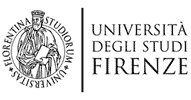Presentation
“Designing sustainable and resilient cities and territories to meet the challenges of the 21st century".
The master’s degree in Urban and Regional Planning and Design (URPD) trains specialists in the field of knowledge and management of global change, through multidisciplinary and innovative methods. Negative aspects of globalization (i.e., low quality of contemporary urbanization, climate change, environmental disasters, large migrations, social injustice, pandemics, and the energy crisis) massively affect all living contexts that require urgent interventions. This master’s degree – built by the Department of Architecture (DIDA) and the Department of Agriculture, Food, Environment and Forestry (DAGRI) – adopts a multidisciplinary, integrated, and interactive approach to design strategies, with particular attention to the simultaneous use of technical and artistic methods. Projects developed during the two-year master’s degree are shaped by the integration of knowledge and methodologies of urban and regional planning, river restoration, ecology, economics, landscape architecture, and agroforestry, both in the Global North and South.
EDUCATIONAL GOALS
"Every place has its own true personality, made up of unique elements, a personality that may have been dormant for too long but which it is the task of the urban planner, as an artist, to awaken" (Patrick Geddes 1915)
"Making cities and human settlements inclusive, safe, resilient and sustainable" is the goal of the 17 Sustainable Development Goal of the UN 2030 Agenda for Sustainable Development, which Italy also signed up to in 2015. Transforming metropolitan areas, small and medium-sized cities, as well as rural territories or inland areas undergoing depopulation into 'self-sustainable', resilient and welcoming places for new and old inhabitants is the goal with which teachers and students are constantly confronted in the educational process. Applying the concept of 'urban bioregion', i.e. designing urban and territorial contexts that are articulated and in balance with their environment, during the two-year course, alternative settlement models are developed to the current eco-socio-catastrophic trend of large global urbanisations, such as megacities and megaregions, which are bringing serious environmental, social and health problems to the entire planet. In particular, the degree course trains professional figures with the following specialisations
- Spatial planner and designer
He is competent in the elaboration of plans, strategic scenarios and territorial projects of vast areas of a multifunctional and multi-actor character, such as landscape plans, strategic plans, multifunctional agricultural parks, territorial parks, river parks, territorial regeneration plans, food plans, river contracts, territorial programming acts (rural districts, biological districts, agro-urban programmes, etc.), monitoring and strategic environmental assessment of plans and projects.
- Urban designer and planner
He has expertise in the planning and design of sustainable and resilient cities and neighbourhoods, with the recovery of degraded areas and the design of interface areas between the city and agricultural land and urban frontages, addressing the closure of energy cycles, water reuse and recycling, and sustainable mobility (structural plans, municipal operational plans, recovery plans, climate adaptation plans, urban food plans, sustainable mobility plans).
- Planner and designer of public policies and participatory processes
He/she is an expert in the analysis, management and design of public policies influencing the quality of life in urban and territorial contexts (housing policies, public transport policies, etc.). He is able to apply techniques for the definition of plans, programmes, projects produced by the interaction between public actors, stakeholders and citizenship (community maps, river contracts, structural plans, etc.).
ORGANIZZAZIONE DELLA DIDATTICA
78 cfu8 examinations |
10 cfufree courses
|
8 cfuinternship |
12 cfufinal proof |
108 cfu |
|||
|
1° anno
|
2° anno
|
|
|
|
|
|
The second semester of the second year of the Master's degree is devoted entirely to internship activities, the student's choice of subjects and the drafting of the dissertation, with the aim of supporting the focusing of the undergraduate student's professional aptitudes, making the most of relations with the world of work.


